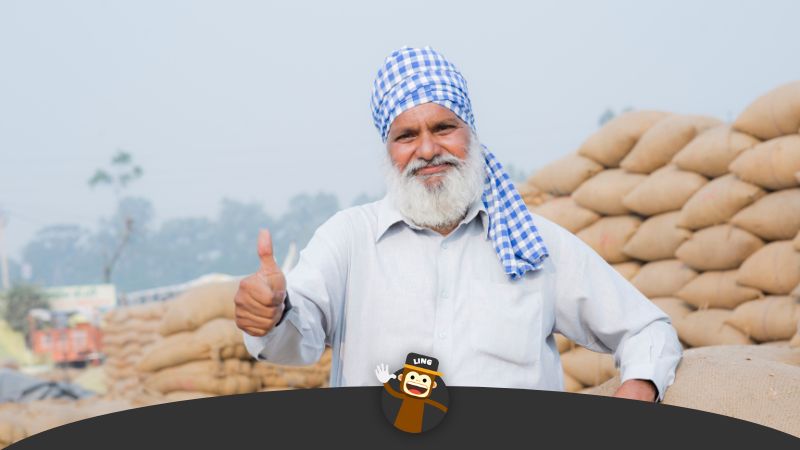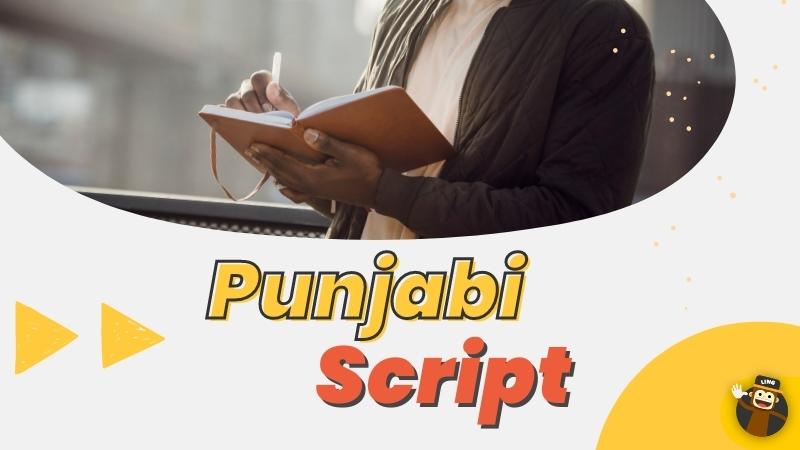Punjabi is famous for its culture. But have you looked into the script of the Punjabi language? The spoken language of Punjab can be found in India and Pakistan, and the written one has differences between the two countries.
Do not let the language’s hilarious nasal sounds or high tones deter you from knowing some fantastic facts about the Punjabi Script. Let’s give it a try!
Origin Of Punjabi Script
The name of written script of Punjabi people is called the Gurmukhi script. This means ‘from the mouth of the Guru.’ History tells us that the second Sikh Guru, Angad, made the Gurmukhi script, and this was as early as the 16th century.
The Sikh Gurus spoke in Punjabi, and the Gurmukhi script was used to write the Guru Granth Sahib, the holy book of the Sikhs. The Gurmukhi alphabet is commonly used to write Punjabi, but there are also two more alphabets: the Shahmukhi alphabet and the Devanagari alphabet.
Shahmukhi means ‘from the mouth of Shahs,’ and Devanagari means ‘the container of divine light.’ Many of what we know today are from the search and knowledge of the scholar Piara Singh Padem.
The Punjabi originates from the Indo-Aryan family, which in turn belongs to the Indo-European family. A lot of the languages in India belong to these family groups. Punjabi is used in Sikh scriptures, but other languages are included, but all use the gurmukhī script. They are Sanskrit, Persian, Khariboli, and Brajbhasha.
Punjabi Script Today

Punjabi is one of India’s official languages, with a total of 22 languages. Punjabi speakers in India belong mainly to the Sikh faith and follow the Gurmukhi alphabet, based on the Indic script. The same spoken language is used among Punjabi speakers in Pakistan who follow the Shahmukhi alphabet based on Perso Arabic script.
Punjabi is a distinct language spoken by 113 million people around the world. It has thirty-five letters and ten vowels.
Here Are The Vowels Of The Punjabi Script
English has letters that makeup vowel sounds. In Punjabi, there are special vowel symbols that make the vowel sounds. There are some rules about vowels in the Punjabi script. There are:
- One letter can be modified by one vowel symbol only
- if there are two vowel sounds; one letter must be added. The second letter is present to create the second vowel sound.
- When a consonant is not available to go with a vowel, a Matra is used to write the vowel sounds
- a short vowel is called Mukta, which means free, and a long one is called Kanna
- There are some vowel carriers which have no sound (we shall see them below)
To learn the vowel symbols, the matras need to be known. Here they are:
| Vowel Symbol Name | Punjabi Vowel | Pronunciation |
| Mukta | ਅ | /a/ |
| Kanna | ਆ | /aa/ |
| Sihari | ਇ | /i/ |
| Bihari | ਈ | /ii/ |
| Aunkarh | ਉ | /u/ |
| Dulenkarh | ਊ | /oo/ |
| Lanv | ਏ | /e/ |
| Dulawan | ਐ | /ae/ |
| Horha | ਓ | /o/ |
| Kanaorha | ਔ | /ao/ |
Here Are The Consonants Of The Punjabi Script
Gurmukhi script is written in eight rows; the first seven rows have five letters, and the last row has six letters. Here they are:
| Alphabet Row | Script Group Name | Name of Letter | Pronunciation |
| First Row ੳ ਅ ੲ ਸ ਹ | Gurumukhi Script | urha ੳ, airhaa ਅ, eerhi ੲ, sussa ਸ and hahaa ਹ | No sound |
| Second Row ਕ ਖ ਗ ਘ ਙ | Vellars | kukka ਕ khukha ਖ gugga ਗ ghugga ਘ ngunga ਙ | /k/ /kh/ /g/ /gh/ /ng/ |
| Third Row ਚ ਛ ਜ ਝ ਞ | Palatals | chucha ਚ chhuchha ਛ jujja ਜ jhujja ਝ neya ਞ | /ch/ /chh/ /j/ /jh/ /ny/ |
| Forth Row ਟ ਠ ਡ ਢ ਣ | Retroflexes | tainka ਟ thutha ਠ dudda ਡ dhuda ਢ nhanha ਣ | /t/ /th/ /d/ /dh/ /nh/ |
| Fifth Row ਤ ਥ ਦ ਧ ਨ | Dentals | tutta ਤ thuththa ਥ dudda ਦ dhudda ਧ nunna ਨ | /t/ /th/ /d/ /dh/ /n/ |
| Sixth Row ਪ ਫ ਬ ਭ ਮ | Labials | puppa ਪ phupha ਫ bubba ਬ bhubba ਭ mumma ਮ | /p/ /ph/ /b/ /bh/ /m/ |
| Seventh Row ਯ ਰ ਲ ਵ ੜ | Semi Vowel Sign | yaiia ਯ raaraa ਰ lallaa ਲ vavaa ਵ rhaarhaa ੜ | /y/ /r/ /l/ /v/ /rh/ |
| Eighth Row ਸ਼ ਖ਼ ਗ਼ ਜ਼ ਫ਼ ਲ਼ | Neo Group | susse pair bindi ਸ਼ khukhe pair bindi ਖ਼ gugge pair bindi ਗ਼ jujje pair bindi ਜ਼ phuphe pair bindi ਫ਼ lulle pair bindi ਲ਼ | /sh/ /khh/ /ghh/ /jhh/ /phh/ /lh/ |
- The first row of letters act as vowel carriers and hold no sounds.
- The second row are the Velars said out using the soft palate at the back of the mouth.
- The third row are the Palatals as the tongue hits the hard palate of the mouth to say these.
- The forth row are the Retroflexes because the rolled tongue touches the roof of the mouth.
- The fifth row are Dentals because they touch the upper teeth.
- The sixth row are Labials are the letters pronounced using the lips.
- The seventh row are Semi vowel signs.
- The eighth row is the Neo group with letters mostly from Persian language.
Learn the Punjabi Language With Ling

As the Sikh Gurus rightly named it, the Gurmukhi script, or script of words that come from the mouth of Gurus, is no ordinary thing! Writing Punjabi, the Punjabi alphabet, vowel signs, and nasal consonants and putting it together to create words – is an influential art.
The Punjabi language is fascinating. Especially the Gurmukhi alphabet is an intriguing script that takes you on a learning adventure. Writing Punjabi is an essential part of immersing in the culture and language.
Whether it’s to partake in a Punjabi wedding, understand the difference between Pakistani and Indian Punjabi, or just a desire to learn and write Punjabi script – let Ling be your friend, company, and guide. Visit Punjab, learn the Gurmukhi alphabet, and prepare for your visit with Ling.



































































